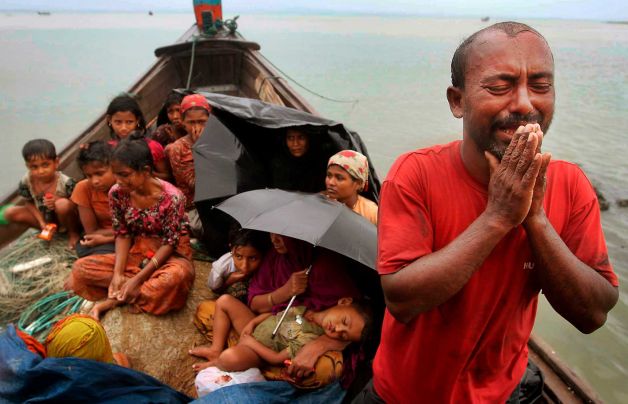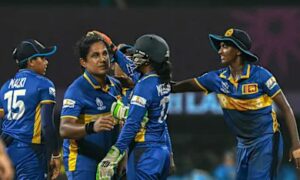
File Picture Courtesy : HindustanTimes
The origin of the term ‘ Rohingya’ is phonological as this how it sounds when the word ‘Rakhine’ is pronounced by a person speaking in Chittagongian dialect accented Bengali- the mother tongue of nearly all Muslims of the erstwhile Arakan and now Rakhine state of Myanmar.
The term is not recognised by the government though this group of Chittagongian dialect speaking Muslims prefer to call themselves Rohingyas after the Army take over in 1962 when the Government initiated a rigorous process of verification of the status of settlers who were not ‘ indegenous to Burma as a measure of asserting their distinct ethnic and religious identity. It has thus acquired political and geopolitical significance as prior to 1962 they used to refer themselves Arakan Muslims.
The geopolitical importance of the Rohingyas is because of their concentration in the North Rakhine bordering Chittagong district of Bangladesh in sizeable strength though with a population of 1 million plus they are in a minority in the total Rakhine population of 3.2 million of mostly Buddhists. The Statesman’s Yearbook 2017 that ” around 1 million Muslims of South Asian descent are stateless ” in Rakhine state.
To make an estimate of the present Rohingya “stateless ‘ population is hazardous because the mass exodus of this group of Muslims have been taking place since 1978 and again in 1991, 1992 and since 2012 it has been a regular and steady movement of the Rohingyas seeking refuge in countries in the neighborhood – mainly in Bangladesh but also in India and countries in south east Asia.
About half a million Rohingyas have taken refuge in Bangladesh in the wake of disturbances after August 25 this year and according to Bangladesh an equal number of Rohingyas have been living in refugee camps in Bangladesh who moved earlier in several waves.
Thus it is difficult to estimate the Rohingya population still left in Rakhine though it must be small as the satellite imageries show large tracts of burnt out villages where the Rohingyas lived till recently. There is thus some truth in the assessment of the UNHCR that it is a ” text book case of ethnic cleansing.”
( The writer is a retired IAS officer of the Assam – Meghalaya cadre and has served as Scientific Consultant in the office of the Principal Scientific Advisor to the Government of India)


















